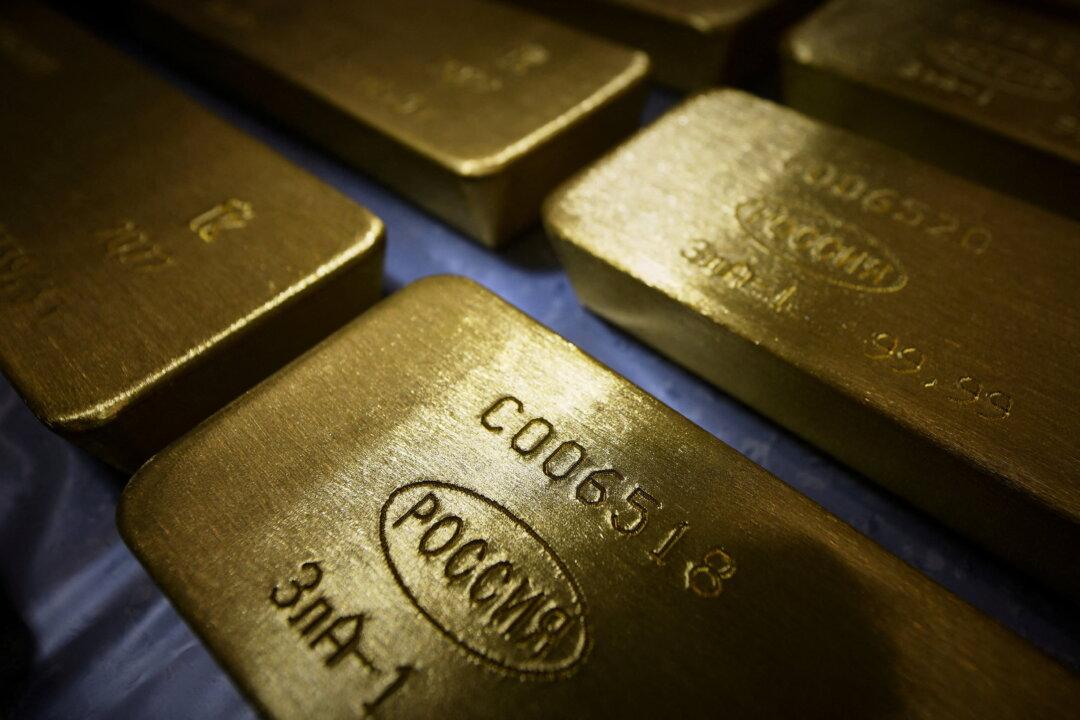Commodities prices could rise by 40 percent and will likely continue to go higher, according to a note from JPMorgan Chase from April 7, as raw materials hit a record high last month following Western sanctions on Russia due to its invasion of Ukraine.

Marked ingots of 99.99 percent pure gold are placed in a cart at the Krastsvetmet non-ferrous metals plant in the Siberian city of Krasnoyarsk, Russia, on March 10, 2022. Alexander Manzyuk/Reuters
|Updated:




